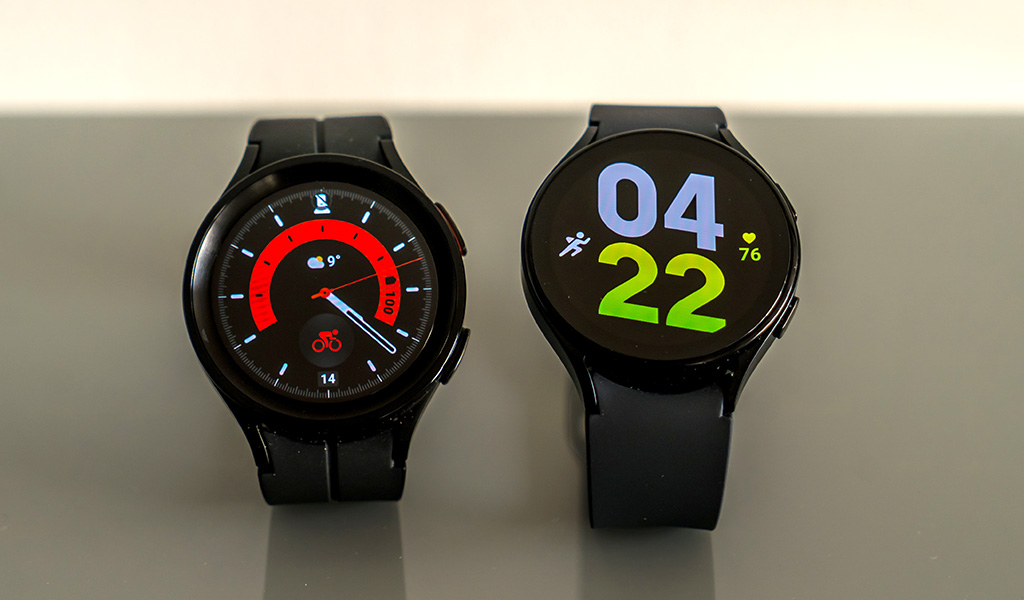
The Galaxy Watch5 Pro and Galaxy Watch5 don’t radically change what Samsung wants to do with its smartwatches, and they remain two of the best available. The focus did change a little this time. Out goes the Classic, in comes the Pro, a move that totally drops the physical rotating bezel and replaces it with touch-based haptic alternatives.
In going with a Pro version, Samsung wants to make a stronger claim that it can do a watch capable of handling tougher workouts and conditions. Meanwhile, the regular Watch5 is a similar to the previous Watch4 Classic, save for trimmer dimensions. Both of these smartwatches have plenty to offer, but making a decision requires some food for thought.
Design and setup
The Galaxy Watch5 comes in both 40mm and 44mm sizes, while the Watch5 Pro only comes in 45mm. It’s the first time Samsung used sapphire crystal to protect their respective screens, adding some extra durability. The Pro model gets a titanium body, whereas the regular one is made with aluminum. Each has IP68 water resistance, plus 5ATM and 810H military standard protection, so either one can take some punishment.
The regular model is, to a large degree, simply a refashioned version of the regular Galaxy Watch4. The Pro is a revised take on the Classic, only by removing the physical bezel, it has a digital one instead. Simply put, it doesn’t feel the same, and functionally, it doesn’t act the same. That physical bezel was precise to a point that it was hard not to navigate the screen without it. And while the Classic wasn’t considered the “active” smartwatch, the bezel actually make it easier to use in active situations.
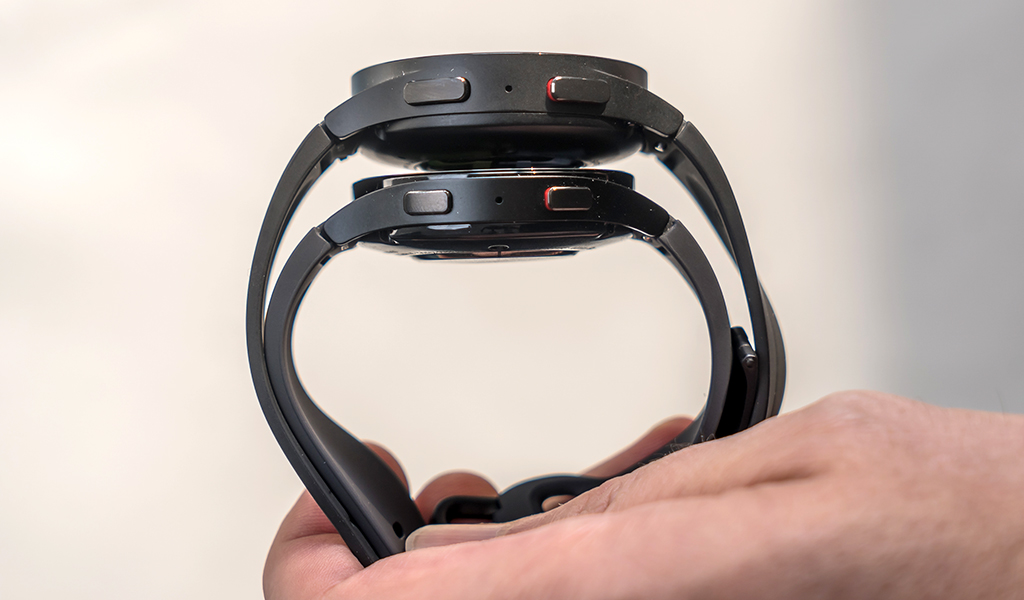
That irony no longer applies here because you’re more likely going to use a combination of the digital bezel and touchscreen. That also goes for much of what these watches do situationally. From notifications to Samsung Pay, how you access the various apps and features available really depends on what you feel comfortable with. If you’re coming at either of these watches after using one of their predecessors, you will find something that works for you, even if it does feel weird at first. If you’re new, their features may be convincing unto themselves.
As per usual, both the Watch5 and Watch5 Pro have two physical buttons on the side, the top a home button, the bottom a back button. Under the hood, not much changed. Samsung went with the same Exynos W920 processor it used for the Watch4 models. RAM and storage also remain the same, only the Pro gets a bigger battery.
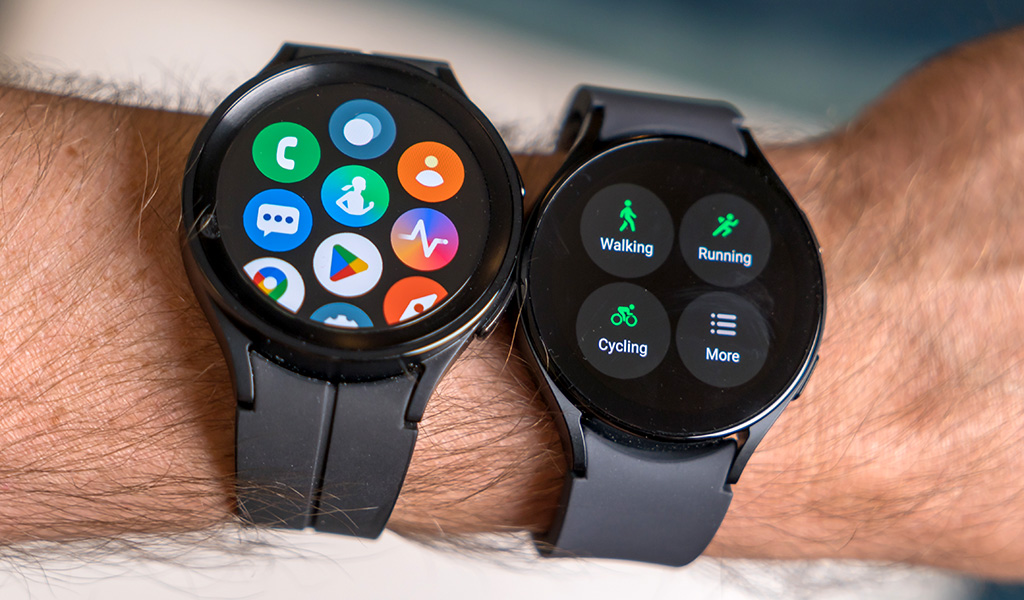
Wear OS carries on
If you’re expecting a big leap forward in how Wear OS works on a Samsung smartwatch, you’ll have to settle for more familiarity instead. That’s not necessarily a bad thing, but I do want to temper expectations. It remains a combination of Samsung’s own One UI with Wear OS, retaining the look and feel of past Samsung smartwatches.
You get a pretty decent level of access to a variety of apps. Google’s suite is growing, and using Maps is already a big step forward from before. You can use Google Fit if you like, though both watches integrate more seamlessly with Samsung Health. Spotify works nicely, and with the onboard storage, you’re able to store music for offline playback. That’s great if you want to keep your phone away during a run or workout.
The Galaxy Wearable app also plays a key role. You can just as easily download and install apps through it on your phone, rather than just the watch directly. Google Assistant now works, letting you talk to it on your watch like you would on your phone or other compatible devices. If you’re not a fan of Samsung’s Bixby, you’ve got a better voice assistant available now.
Wear OS generally improves notifications, regardless of whichever Android phone you use. You do get deeper integration with Samsung devices, be it phone or the company’s earbuds. For instance, if you have a pair of Galaxy Buds, you can control some of their features from either the Galaxy Watch5 or Galaxy Watch5 Pro.
There’s a fluidity to all of this that I appreciated, and it’s a sign smartwatches and Android are working better together. At the same time, Wear OS also feels like a work in progress.
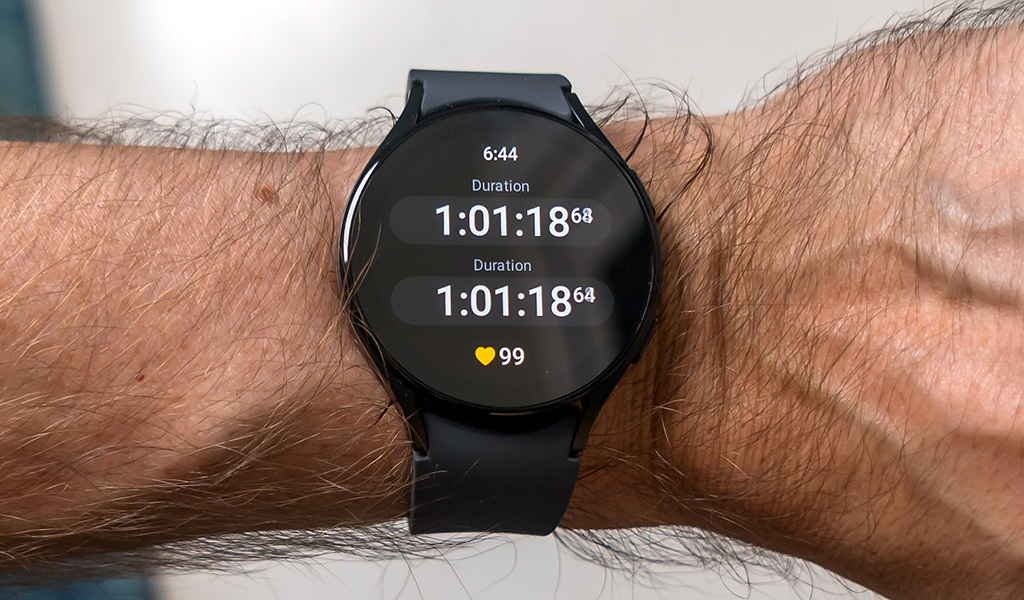
Tracking exercises
Not a whole lot changes with how these watches track your movements. Over 90 exercises are on board, about six of which automatically track for you once you start. With GPS built-in, you also get route, distance and pace. For most exercises, you will need to start it on the watch first to make sure you get all the tracking data.
That data goes to Samsung Health, collected and arranged with all the other health and fitness metrics. Again, there’s nothing new about any of this. What I got out of the Galaxy Watch5 and Watch5 Pro felt the same to me as their predecessors did. I will say, though, the Watch5 Pro feels more rugged. I accidentally bumped into a table and the handlebar on my bike, and it looked like nothing happened to it.
![]()
The Pro takes things further with something called GPX, short for GPS Exchange Format. These are files with visual information, like routes, trails, tracks and waypoints. They can be useful when you need to stay on track, including in areas without reception or signal, except they’re currently only for hiking and cycling. You can’t use them for running, walking or any other exercise. If you wanted to go through with GPX routes, you would need to add them from Samsung Health, Strava or some other app supporting the feature.
Speaking of third-party app support, a variety of others are still there to try. Cardiogram, MyFitnessPal, GolfBuddy, Google Fit, Adidas Running, 7 Minute Workout, Calm and Lifesum are among them. You can go swimming with either watch, including saltwater, maintaining another key exercise option.
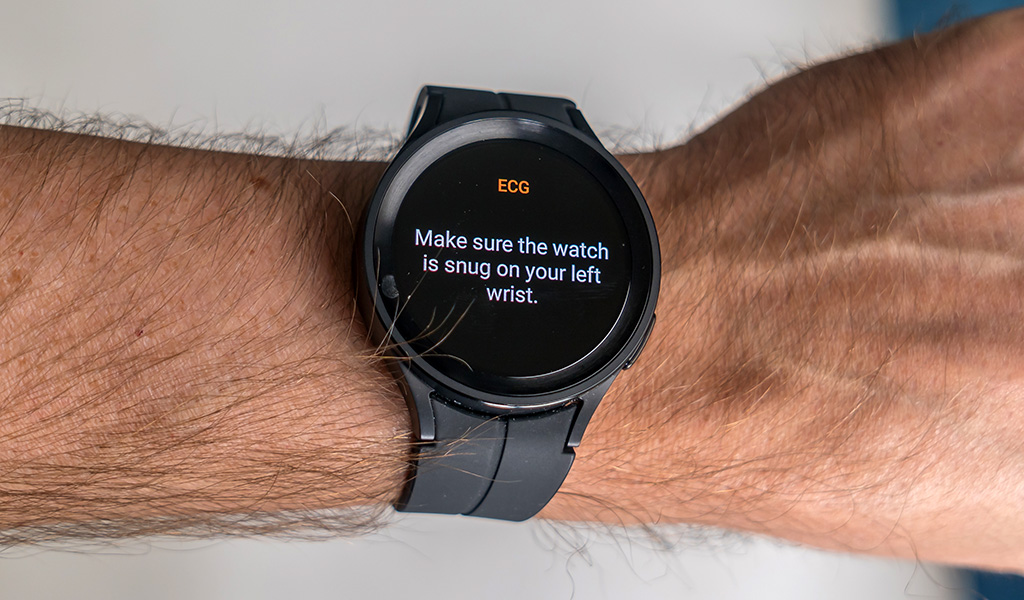
Health tracking features
Samsung added a skin temperature sensor to the watches, though I wasn’t able to test it because it’s not activated yet. Other than that, it’s a familiar set of features focusing on health. The SpO2 sensor measures blood oxygen. Body Composition reads skeletal muscle and body fat percentage based on your weight. All you do is apply your ring and middle fingers onto the two buttons to get the reading. I still don’t see a whole lot of value out of it, but it’s there in any case. Sleep tracking is a little more accurate this time around, but I never had major issues with it in the past.
Then you have the ECG (electrocardiogram) and blood pressure monitor. Both are now active after Health Canada approved them. They require some setup to get going, starting with Samsung Health Monitor on either Watch5 plus on the phone, too. For the blood pressure monitor, you will need to calibrate it using an actual blood pressure monitor. Once you do, you get readings on demand until you need to calibrate again a month later.
These features aren’t designed as alternatives to medical equipment or testing, but you could look at them as early warning systems. If the ECG finds something off about your heart rate, it may be worth exploring with a doctor. Same with blood pressure readings that either seem too high or too low.
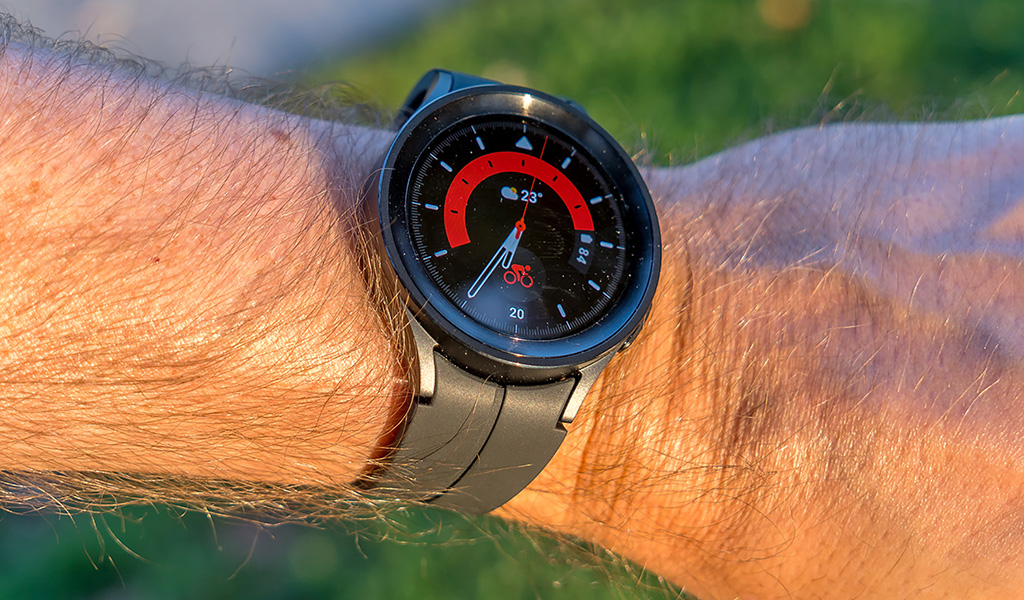
Battery
Both the Galaxy Watch5 and Galaxy Watch5 Pro aren’t going to last too long per charge, so expect to recharge them often. If you’re going to travel with either one—even if it’s a short trip—you best bring the charger with you. The regular Watch5 could last two days tops with light usage. Track exercises with GPS on, along with notifications coming in, and you’re looking at more like 24-36 hours.
The Galaxy Watch5 Pro is better in that regard. I routinely got two days out of it. If it ever went longer, it was because I wasn’t doing much on it, so three days is certainly possible. Both watches use the same charging pad, though any Qi-enabled wireless charger pad or surface can also do the job.
Final Thoughts
Samsung tried to differentiate the two Galaxy Watch5 models by pushing the Pro model as more amenable to the active crowd. Size will matter, depending on how big or small you want the watch to be, but the straps also matter. The Pro comes with a strap using a different clasp system, though it’s easy to find alternative straps to make the watch fit in wherever you go. Put a leather, fabric or metal band on either one of these, and they start to look considerably different.
Whichever way you go, both smartwatches are among the best you’ll find if you’re an Android user. Neither one will work with the iPhone anyway. Samsung largely tweaked what was already there from the Galaxy Watch4, so there’s no need to upgrade if that’s what you have. Otherwise, you probably won’t feel disappointed wearing either of them every day.
The Galaxy Watch5 is available now in grey, blue, pink gold and silver/bora purple. The Galaxy Watch5 Pro is available now in black.


